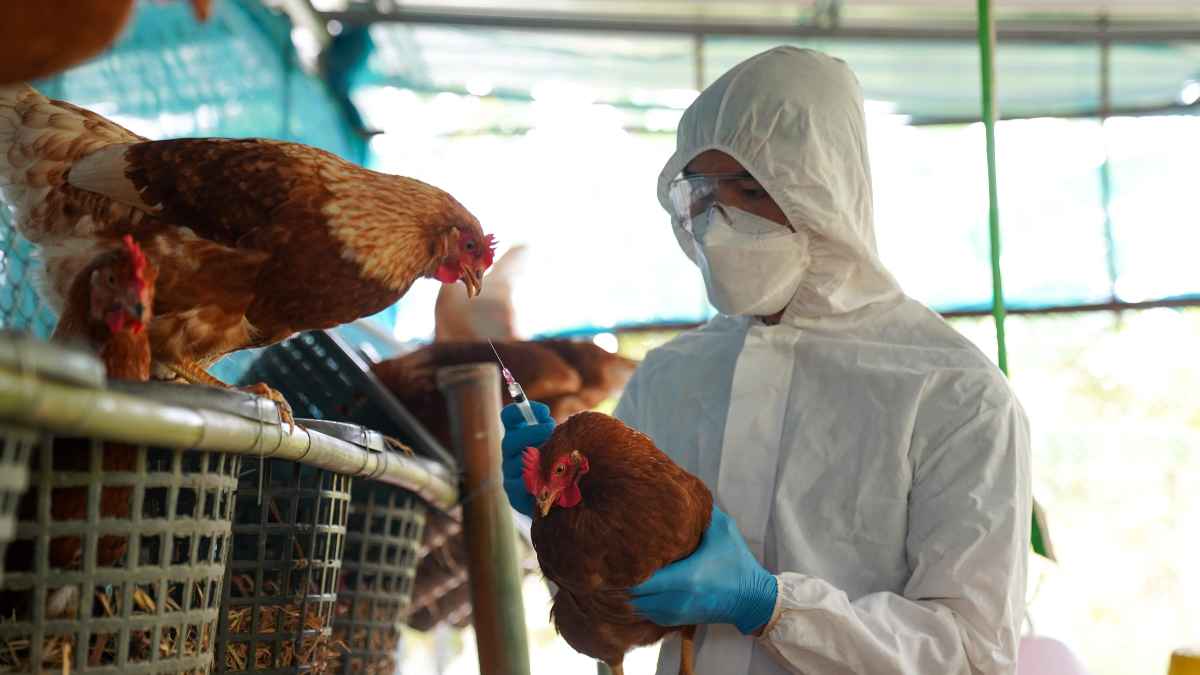Alarm bells are ringing in the United States due to the mutation of a deadly virus that affects both humans and animals. It is a scenario that could have very serious consequences for public health. Recently, researchers have pointed out the possibility that a simultaneous infection could generate a new virus with unique characteristics and greater capacity for contagion between humans.
The risk became evident following cases of a patient in Louisiana and a teenager in Canada. Both presented severe symptoms linked to mutations of a known flu, according to Newsweek. Health authorities, led by the Centers for Disease Control and Prevention (CDC), have issued recommendations to minimize this risk.
Virus mutation causing concern in the U.S.
The CDC warns that simultaneous co-infection of avian influenza (influenza A) and human influenza (H1N1 or A H3N2) can lead to genetic exchange between the viruses. Such a phenomenon, known as “genetic reassortment”, could lead to the emergence of a deadly virus with completely unknown gene combinations. This scenario represents a potential public health impact, raising alarm bells across the United States.
The factors that could lead to this complicated situation in the health system have to do precisely with co-infection, mutation and pandemic risk. These viruses, by using segments of genetic material to replicate, and by infecting the same cell, could exchange fragments. This would promote the emergence of a new variant much more transmissible between humans, which would increase the risk of global outbreaks.
In the face of this new virus, the CDC stresses the importance of seasonal flu vaccination as a preventive measure. And while these vaccines do not prevent avian flu, they could reduce the risk of co-infection by reducing human flu cases.
Confirmed cases and preventive measures
In 2024, 66 confirmed and seven probable human cases of avian flu have been reported in the United States. Most of these infections are attributed to direct contact with infected animals, such as livestock or poultry, rather than human-to-human transmission. According to the CDC, the risk of community spread remains low, but vigilance is essential.
Specialists such as Dr. Melanie Wellington, from the University of Iowa, have recently explained in educational videos how the genetic exchange between viruses occurs, creating a new, much more contagious and dangerous virus. These explanations are intended to inform the public about the importance of preventive measures. Some of them are:
- Avoid direct contact with infected animals.
- Implement biosecurity measures in farms and rural areas.
- Vaccination against seasonal flu.
On the other hand, the virologist Edward Hutchinson, from the University of Glasgow, emphasized that frequent contact between humans and viruses of animal origin is quite dangerous. It increases the probabilities of adaptation and spread of the disease. This reinforces the need to closely monitor these interactions.
CDC actions in the face of this new virus
According to its official website, the Center for Disease Control and Prevention performs different types of actions with which it intends to keep under epidemiological surveillance the new virus. Among them are:
- Supporting important research with state and local partners to assess the public health impact of each case of H5 virus infection.
- Works closely with state and local collaborators to conduct active surveillance.
- Monitors for changes that could indicate that H5 viruses are becoming better adapted to mammals. Therefore, they could spread more easily from animals to humans or between humans, or cause more severe cases of disease.
- Monitor for viral changes that could make these viruses less responsive to influenza antiviral drugs or viruses prepared as vaccine candidates.
Keep informed of more news related to science, taking a look at the specialized section on this topic and learn about the latest publications that are being made.







